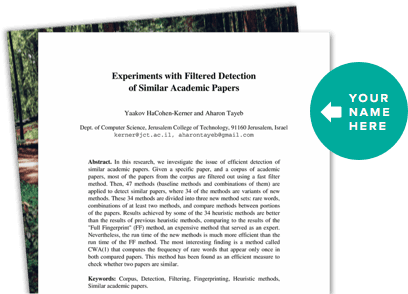About This Project
Salt marsh grasses are vital for supporting wildlife, improving water quality, and stabilizing shorelines. Working with three native salt marsh grasses - Spartina alterniflora, Distichlis spicata, and Spartina patens - we'll explore temporary immersion bioreactor system for tissue culture, agrobacterium-infiltrated transformation to create pigmented roots, and novel substrates for root growth that would culminate in a a root embroidery triptych.
Ask the Scientists
Join The DiscussionWhat is the context of this research?
Warm season grasses like the native salt marsh grasses were known to be recalcitrant to tissue culture (https://link.springer.com/arti...) Empirically, only a handful out of forty-eight wetland monocot species have shown successful tissue culture of calluses, Agrobacterium-mediated transformation (https://doi.org/10.1515/znc-2005-3-414) However, a recent study also has shown that temporary immersion bioreactor systems could achieve multiplication and rooting of sugarcane (also in the poaceae family) (https://doi.org/10.1007/978-1-...)
Inspired by these studies, we plan to use temporary immersion bioreactor systems for expediting callus growth and experimenting with agrobacterium transformation for other grass in the poacae family such as Distichlis Spicata, Spartina Alterniflora, and Spartina Patens.
What is the significance of this project?
Salt marshes are vital to New York’s coastal ecosystems, offering wildlife habitats, filtering pollutants, and protecting against storm surges. Salt marsh grasses have been known to be challenging to regenerate in vitro, so we're excited to experiment with temporary immersion systems as an alternative to the traditional method of using semi-solid media for the multiplication stage.
We also have a unique focus on root development for embroidery and for the rooting stage, plan to experiment with novel substrates like chiffon, wool roving, beeswax molds soaked with auxin-rich media. Traditional tissue culture relies on agar, but alternative substrates like betel-nut coir and polyurethane foam have shown promise (https://www.semanticscholar.or...). We aim to build on these studies and explore new substrates that could potentially be as effective as agar for root growth and also creative applications.
What are the goals of the project?
Our goal is to successfully culture various native salt marsh grasses in vitro using temporary immersion systems. We will also be experimenting with different plant media recipes and substrate materials enriched for root growth, and agrobacterium-mediated plant transformations to introduce new colors to the roots which would culminate in a root embroidery triptych.
Budget
Our budget will cover purchasing seeds of Spartina alterniflora, Spartina pectinata, and Distichlis spicata. After sprouting these, we will use the purchased tissue culture materials and equipment such as plant growth regulators, MS media, a pH probe, light meter, and biocouplers for temporary immersion bioreactor systems to create media and co-culture the seedlings with the 35S RUBY transformed agrobacterium.
We’ve also allocated funds for further developing bio-embroidery techniques, including mold materials such as beeswax and Polylactic Acid (PLA) filament, as well as fabric substrates such as wool roving and chiffon.
Additionally, a portion of the budget is dedicated to access to a community biology lab, Genspace, at the individual member level for working on a personal project (which would give access to -80 and -20 freezer, flow hood, centrifuge, etc) as well as cost for installing a pop-up exhibit (framing and space rental).
Endorsed by
 Project Timeline
Project Timeline
By March, we’ll acquire materials and finalize experiments. Initial tissue culture for Distichlis spicata, Spartina alterniflora, and Spartina patens wraps up in May, with plans to start transformation experiments in June. This will enable a root embroidery prototype in July. Findings will inform a triptych by October, with a November exhibition to share our art, journey, and research findings.
Jan 21, 2025
Project Launched
Mar 01, 2025
Complete Material Acquisition and Experiment Design
May 03, 2025
Tissue culture experiments for the three salt marsh grass
Jun 07, 2025
Transformation experiment
Jul 05, 2025
Complete an initial salt marsh grass root embroidery prototype piece
Meet the Team
Team Bio
Sally and Romilly met at Genspace’s biomaterials exhibit Living Room. Sally, researching seed transformation using Agrobacterium, and with a background of building tools for artists, wondered if she could transform grass to expand Romilly’s palette for root embroidery. Both are deeply engaged in teaching and community projects tied to local places, which made native salt marsh grasses in New York a natural focus for their collaboration.
Sally Kong
Sally is a software engineer, artist, and hobby biologist based in Brooklyn, NY.
During the day, she has built artist tools and 3D production pipelines for feature animation and games at Blue Sky Studios, Netflix, and Rockstar Games.
Outside of work, she spends most of her time at Genspace, a community biology lab based in Brooklyn, NY.
Romilly Rinck
Romilly Rinck is a textile artist, material researcher and educator from West Sussex, UK. Her process is craft-based, led by the materials she works with and the places she inhabits and researches. Romilly is interested in the anima loci, or the spirit of a place, so her work is often rooted in a specific ecosystem. As an animist, she is curious about the stories materials can tell and creates a mythology of materials through her work. Romilly’s work has been shown in New York, London, and Paris and has been featured in Arte Morbida, Surface Design Awards, and New York Textile Month.
Romilly was a school teacher in the UK. She is now based in New York and is a part-time faculty member at Parsons School of Design.
Lab Notes
Nothing posted yet.
Project Backers
- 1Backers
- 1%Funded
- $5Total Donations
- $5.00Average Donation



